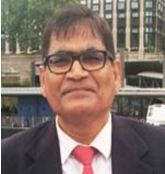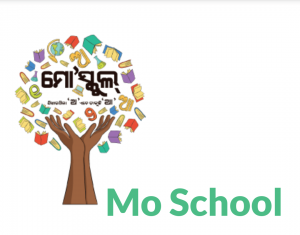 By Professor Satya Narayan Misra in Bhubaneswar, March 25, 2023: Mr. Naveen Patnaik took over as the President of BJD (1997) and Chief Minister of Odisha in 2000, with a record-breaking five stints as CM. He is universally recognized as the best Chief Minister & there is a surprising congruence between the length of his tenure & the height of his popularity.
By Professor Satya Narayan Misra in Bhubaneswar, March 25, 2023: Mr. Naveen Patnaik took over as the President of BJD (1997) and Chief Minister of Odisha in 2000, with a record-breaking five stints as CM. He is universally recognized as the best Chief Minister & there is a surprising congruence between the length of his tenure & the height of his popularity.
This is unsurprising because of the development models he has chosen, & the quiet & unobtrusive manner, he has clothed his politics. Be it grass root democracy, where 50% of women are part of Panchayats, or Parliament where 42 % of the MPs from BJD are women. This is in sharp contrast to women’s MP representation in the Lok Sabha which is around 14% & the debate to give 33% representation to women in Lok Sabha is caught in the whirlpool of OBC politics.
The Maternity Benefit Scheme (Mamta) is another initiative, where Jean Dreze & Reetika Khera’s survey (2021) brings out its successful implementation in contrast to most states where the delivery mechanism is caught in the quagmire of bureaucratic red tape & lack of empathy. The Mission Shakti is another marquee initiative since 2001 which has empowered 70 lakhs, women, by handholding women in accessing credit from formal sources, facilitating marketing, and improving their livelihood perceptibly.
“Mo School” Abhiyan is another sterling development initiative without a parallel anywhere, for ensuring inclusive and quality education in public school. Mr. Naveen Pattanaik launched the “Mo School” Abhiyan; a unique initiative to bring the alumni and the alma mater and the community around the government school together.
The “Mo School” Abhiyan rests on five pillars: Connect, Collaborate, Contribute, Create and Celebrate. The financial contribution of the alumni is matched by the government twice over. By using a mobile application, it has been possible to connect with the alumni and help them to know more about the development work which is needed in the school. The collaboration between alumni, school and district administration as well as the community has led to infrastructure creation and sports infrastructure.
 Many schools are benefitted from technology-enabled interventions to enhance the educational eco system, and multidisciplinary educational content like documentaries, films, and talks by alumni. In some schools, the collaboration has led to exchange programs and participation in national and international sports, and literary and cultural events. As on 31st March 2020, the “Mo School” Abhiyan has covered almost all the blocks (316) and has received 39.6 Crores as a contribution which has been matched by an 80 Crore grant by the government.
Many schools are benefitted from technology-enabled interventions to enhance the educational eco system, and multidisciplinary educational content like documentaries, films, and talks by alumni. In some schools, the collaboration has led to exchange programs and participation in national and international sports, and literary and cultural events. As on 31st March 2020, the “Mo School” Abhiyan has covered almost all the blocks (316) and has received 39.6 Crores as a contribution which has been matched by an 80 Crore grant by the government.
It’s a unique template in inclusive and quality education based on collaboration. One of the areas in which India stands behind 140 countries is its low representation of women in the Parliament. Only 14.39% of women representatives are part of the current Lok Sabha in Lok Sabha as against a global average of 24.6%.
Odisha is way ahead of other states in providing 50% percent reservation for women in local bodies as against a constitutional requirement of 33%. Among the 12 BJD MPs in Lok Sabha, 5 are women (41.6%). In the state legislative assembly out of 16 women representatives, 14 belong to the Biju Janata Dal (BJD). 12% of BJD MLAs are women. The state government revised the 33% reservation to 50% for women in the local government body i.e. Panchayati Raj Institutions way back in 2011.
Quite clearly such healthy representation of women at different levels of Parliamentary democracy has given a major voice to women in bolstering social sector initiatives like healthcare, drinking water, and education. To alleviate maternal and infant under-nutrition, the government of Odisha has launched a scheme for pregnant and lactating mothers called Mamata, which is a conditional cash transfer Maternity benefit scheme. This will help in providing partial wage compensation for pregnant and nursing mothers so that they are able to rest adequately during pregnancy and delivery.
In a survey by the renowned economist Jean Dreze and Ritika Khera (2019), they note: “In earlier surveys, we had also noted how Odisha, a low-income state often clubbed with the so-called BIMARU states (undivided Bihar, Madhya Pradesh, Rajasthan and Uttar Pradesh) not so long ago, was making steady progress in matters of food security, child nutrition, and public health. This time, once again, we saw important signs of hope in Odisha.
 The Mission Shakti program, launched by the Chief Minister of Odisha on 8th March 2001, is the flagship program under which these groups started functioning with the aim of poverty alleviation and women empowerment. Till now it has empowered around 70 lakh women across the state. It has a total financial implication of Rs. 20989 Crore, of which the center’s share is 75% and the state contribution is 25%. It focuses on Women Self Help Groups (WSHGs).
The Mission Shakti program, launched by the Chief Minister of Odisha on 8th March 2001, is the flagship program under which these groups started functioning with the aim of poverty alleviation and women empowerment. Till now it has empowered around 70 lakh women across the state. It has a total financial implication of Rs. 20989 Crore, of which the center’s share is 75% and the state contribution is 25%. It focuses on Women Self Help Groups (WSHGs).
These women SHGs are engaged in a wide range of activities such as the production and packaging of pickles, spices, badi, papad; manufacturing LED bulbs, appliances, utensils, etc. The government of Odisha linked these SHGs with other development & welfare programs for fruitful implementation.
After economic liberalization, Indian states have been grappling with two development debates: Whether to embrace the Bhagwati model of a free-market economy or the Amartya Sen model which harps on paying greater attention to human capability development, with the government acting as the pivot. The Bhagwati model has seen significant improvement in infrastructure in states like Gujarat.
However, Odisha has mostly adopted the Sen Model of development where women and women-centric programs are the epicenters of public policy. Be it the Mo School initiative, Mamata, Mission Shakti, Millet Mission or handsome representation to women in local government & in Parliament, these development initiatives have become templates for emulation by other states in India. However, there are a few unfinished tasks that Naveen babu needs to focus on in the years ahead.
 The first & foremost would be how to contain anemia & stunting amongst children (35%) & high prevalence of anemia amongst girls and women of reproductive age (15-49 years). The NFHS V report presents a disturbing picture as all the developed districts witness a sharp spike from the previous report of 2015-16. A case in point is Cuttack, where it has increased from 44.5% to 63.3%.
The first & foremost would be how to contain anemia & stunting amongst children (35%) & high prevalence of anemia amongst girls and women of reproductive age (15-49 years). The NFHS V report presents a disturbing picture as all the developed districts witness a sharp spike from the previous report of 2015-16. A case in point is Cuttack, where it has increased from 44.5% to 63.3%.
True empowerment of women must rest on proper nutritional intake, and timely supply of iron tablets and micronutrients. The Anemia Mukt Bharat Report clearly reveals that the supply chain management is very weak and bereft of accountability. This is where technology can play a big part. The quality of early childhood education in Anganwadis and public School education, Primary health care leave a lot to be desired.
Besides, instead of improving agricultural productivity and better livelihood of farmers through higher allocation in irrigation, providing access to credit from formal sources, there is a lamentable drift towards populist schemes like KALIA. Given the political stability he enjoys, the secular ethos he fosters & Centre State synergy that Naveen Babu nurtures, Naveen Babu, the writer, needs to invest more in improving quality of education, primary health care infrastructure, and surmount the challenge of under nutrition & anemia, keeping the SDG targets as reference points.


Leave a Reply
Be the First to Comment!